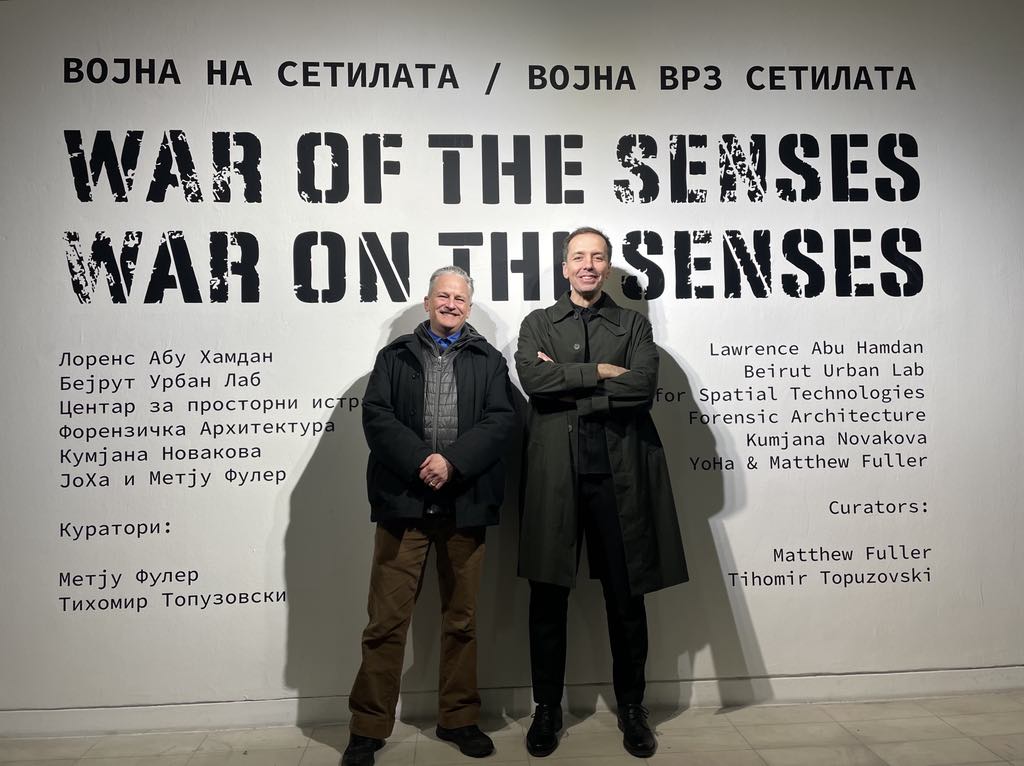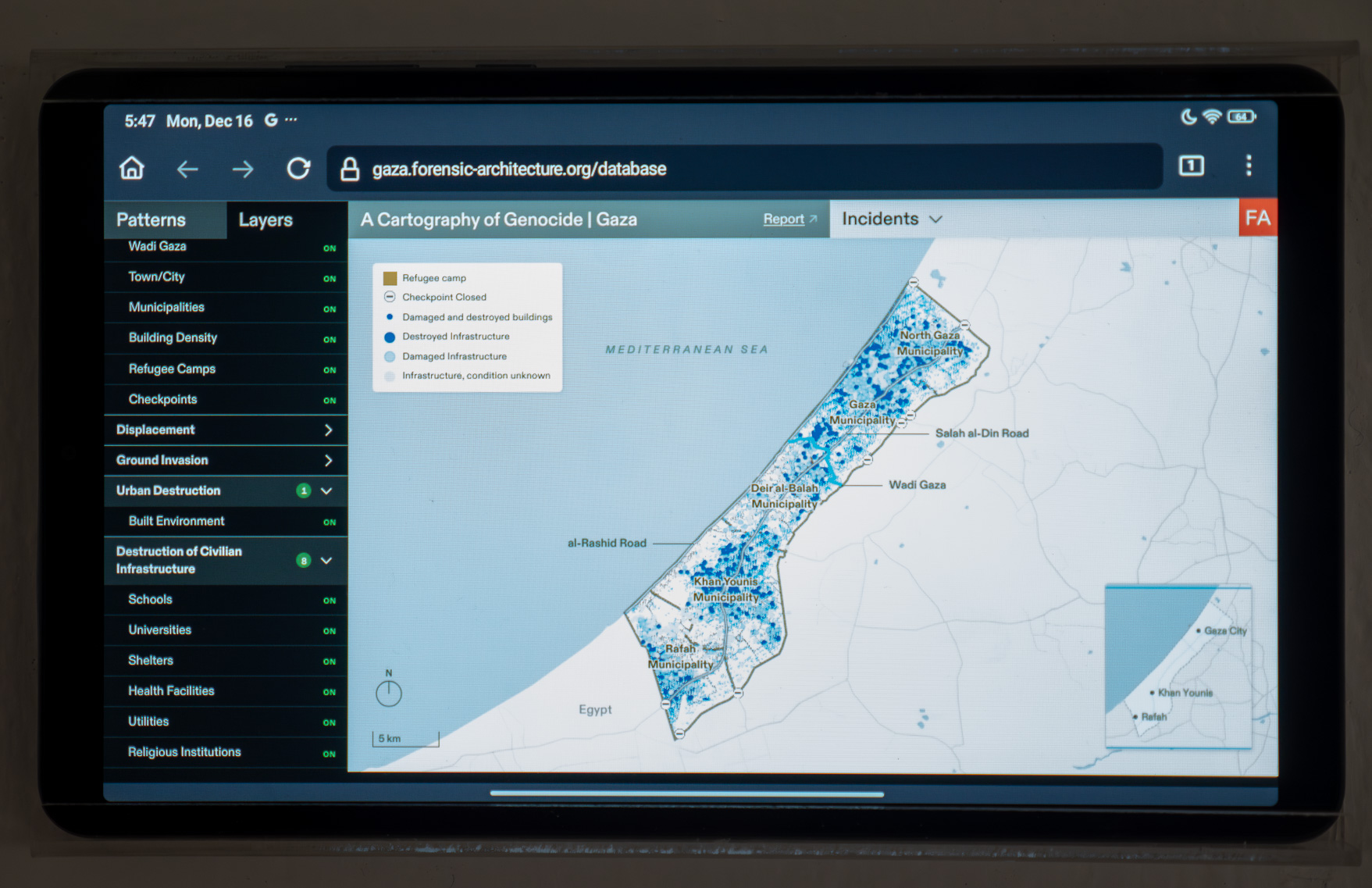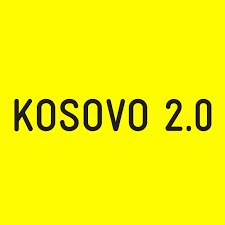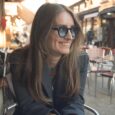‘Reflection on the process of perception’
Can technology and design aid in understanding times of conflict?
In early December 2024, the Museum of Contemporary Art Skopje launched the “War of the Senses/War on the Senses” exhibition, featuring works by Lawrence Abu Hamdan, Beirut Urban Lab, Center for Spatial Technologies, Forensic Architecture, Kumjana Novakova, YoHa and Matthew Fuller.
The exhibition explores wars in places like Lebanon, Gaza, Ukraine and former Yugoslavia. Artists employ digital technology — such as open-source and digital archiving — to analyze events stemming from acts of violence. It holds particular significance for the Balkan region where, through technology, legacies of war and violence continue to shape collective memory and identity.
Through an intricate interplay between digital technologies and the creation, interpretation and use of war imagery, the exhibition explores the intersection of aesthetics and violence. It also investigates avenues of counterpower, reminding us that war, no matter how distant, deeply impacts us and challenges our understanding of reality.
I first came across Forensic Architecture, a multidisciplinary research group and contributor to the exhibition, when it published a groundbreaking investigation, together with Amnesty International, into the Saydnaya prison in Syria. Forensic Architecture uses architectural and digital methodologies to investigate human rights violations and state violence and uncover truths often concealed by power structures. In a remarkable coincidence, after the exhibition’s opening in Skopje, Saydnaya’s prisoners were released following the collapse of the Assad regime.
Fuller, one of the exhibition’s curators, serves on the Advisory Board of Forensic Architecture and actively collaborates with the organization. He also co-authored a book with Eyal Weizman, the founder and director of Forensic Architecture, in which they discuss further the discourse on the intersections of architecture, technology and justice.
Integrating technology as both a tool for investigation and artistic exploration, the exhibition highlights how digital innovations shape our perception of violence — influencing how we document, interpret and ultimately confront these events.
In late December 2024, K2.0 sat down and talked to Tihomir Topuzovski, director of the Museum of Contemporary Art Skopje, Novakova, a research-based filmmaker and Fuller, author and professor at Goldsmith’s University of London, about the exhibition’s themes and the work it showcases. The conversation reflects on aesthetics, the challenges of the project and the project’s significance in light of events like wars in Gaza, Ukraine and Lebanon.


K2.0: How did the “War of the Senses/War on the Senses” exhibition come about? What does it entail and who are the artists involved?
Tihomir Topuzovski: In the past, Museum of Contemporary Art Skopje developed various projects that address similar topics like the ones in the exhibition. Forensic Architecture gave a presentation, in 2018, at the museum.
We are talking about art that can creatively develop visual methodologies and reinterpret evidence of cases or effects reported in the mainstream media.
Since the presentation, as a part of the interdisciplinary program, we organized a discussion in 2020 with Eyal Weizman about the work of Forensic Architecture. Matthew Fuller came to Skopje in 2022, where he gave a talk at one of our events. But this project is, so far, the most important and complex.
We are talking about art that can creatively develop visual methodologies and reinterpret evidence of cases or effects reported in the mainstream media. This exhibition is important not only for North Macedonia but also for the Balkan region, given the conflict from the break-up of Yugoslavia.
The project means a lot as a paradigmatic model. The focus on aesthetics, in the etymological meaning of it, means to perceive, sense or use. This exhibition presents a visual methodology that can give importance to the war, its conflicts and its different cases.
In that context, the importance lies in the publicity of these topics. Eyal Weizman uses the formulation “forums of truth,” where gallery spaces can be reimagined as forums for uncovering and presenting truths. I would say that this exhibition is about presenting the truth.
We are talking about the evidence from various cases, including Ukraine, Lebanon, Gaza and former Yugoslavia. The exhibition includes different artists and collectives, such as the Center for Spatial Technologies from Ukraine; Lawrence Abu Hamdan and Beirut Urban Lab who worked on the cases in Lebanon; Forensic Architecture that work, among other places, in Gaza and Kumjana Novakova, with her work on the war in former Yugoslavia and a bit more abstract work from YoHa [an artist collective] in collaboration with Matthew Fuller.
Matthew Fuller: We are trying to think about different approaches to the kind of information, experience and data that is there. We’re trying to think systematically about the way artists and other related fields are responding to war in the present.
This involves various ways of organizing data, experience, knowledge and reflection in these projects. They’ve got a common theme but examine different kinds of data, phenomena or events in unique ways.
We have work that is reflexive and experiential, investigating how the events of war happen in relation to people’s lives. We’ve got work that’s more diagrammatic, that tries to develop a systematic approach towards unfolding in spatial terms. And then we’ve got work that is more processual, trying to understand how computational forms interact within the structure that processes war in the present day.
All these elements are ways in which artists are developing adequate approaches in getting a grip on the present world. These are experiments or investigations into the material and complexes that emerge, specifically in a present where the intent behind a conflict is seemingly intensifying.
In the text about the exhibition, you write that aesthetics is fundamental to relations of power in today’s world. Can you just expand a bit on this thought, especially in relation to conflict for the past years in Ukraine and the past year in Palestine and Lebanon?
Fuller: The question of aesthetics is a broad one. Perhaps some of this can be seen in relation to how the artists concerned are developing an expanded sense of aesthetics. That is, aesthetics is to do with perception, as Tihomir pointed out, but it also has to do with a reflection on the process of perception.
If aesthetics can be broken down, first of all into sensing, and then sense-making, it can be further understood. Aesthetics is to do with sensing our perception of the world but also to do with sense making, which is our way in which we reason with the world.
Aesthetics is part of that, in terms of structuring the way these emotional forces come into play.
Aesthetics now is also about developing new forms of sensing. From prosthetics or new forms of sensory capacity, new technologies of various kinds or new forms of social processes — gathering and collectivizing sensing becomes more attainable.
For these artists, sensing holds importance yet aesthetics has become increasingly significant in the present, where reason is often overpowered by forms of feeling. A lot of that is driven by or structured and camouflaged by forces that emphasize feelings or emotions, such as anger, rage, resentment, shame and so on, that can drive a lot of contemporary geopolitics. Aesthetics is part of that, in terms of structuring the way these emotional forces come into play.
We know that aesthetics doesn’t necessarily correlate with beauty, and this is especially important when it comes to war images. Can you reflect a bit on this topic? Maybe Kumjana can talk about her work for the documentary “Silence of Reason” that deals with the crime of war rape of women in Foča, Bosnia and Herzegovina.
Kumjana Novakova: I think what Tihomir and Matthew were introducing applies to the line of work that I’m interested in, specifically from the space where I’m based — from the Balkans and from a feminist perspective. With “Silence of Reason,” I was interested in creating an aesthetic archive that subverts the hierarchies of existing archives that are governing the female experience of war in the ‘90s, precisely in Bosnia and Herzegovina.
Regardless of the way that sexual violence was legally approached by the International Criminal Tribunal for Yugoslavia [ICTY], in general, the public discourse didn’t change. In fact, the legal decision by the ICTY in the case Kunarac et al., is much more emancipatory in the way it treats survivors of sexual violence, compared to the public space.
My idea was to pinpoint the heritage that we have and to re-archive it from the position of the survivor. This aim was to create an alternative archive capable of fostering emancipation, even 20 years after the trial.
I re-archived all the evidence and data used by the court to prove the use of rape as a war strategy from the position of the survivor, not from the position of violence or the crime itself. In the process of re-archiving, I understood that one principle was not to use any elements coming from the defense of the perpetrators.
The story comes solely from the survivors, just one way of creating this kind of digital archive. The film and the installation gather the experience of only part of the women who testified. I hope that in the future we can, or I can, work with my collaborators in creating a full archive of all women who survived and testified in court, from which there would be different kinds of evidence presented to the court.
How do you view the evolution of investigative tools like imagery and technology in shaping the narratives of accountability and justice? Additionally, what ethical considerations should guide the artists and researchers in deploying such technologies to document and present histories of violence?
Topuzovski: The work of Forensic Architecture as counter investigations or counter forensics, explains this well. It is a practice that invokes accountability. Through this work, you can construct an image or a new narrative based on evidence, even offering new interpretations in some cases. It can offer a new perspective which is not presented in the mainstream discourse or institutional agencies.
One of the things that the exhibition does is to implicitly track some of the shifts in the way that digital technology has been seen in relation to the question of public truths
For that reason, with these new interpretations, I think that the work of these artists and collectives is a crucial one. It shifts the whole field of contemporary art onto ethical ground. We are responsible, we have urgent situations now, we have a conflict and we are responsible to somehow work in this way.
There is no meaningful way to work differently; our responsibilities and our ethical stance moves us to build and articulate in this way. With the development of technology, we can offer facts and evidence to recreate new evidence.
How does this exhibition, or the work you do, address the role of digital technologies in shaping truths about war through both imagery and disinformation?
Fuller: I think one of the things that the exhibition does is to implicitly track some of the shifts in the way that digital technology has been seen in relation to the question of public truths. It was a novel possibility in the 1990s, that the internet would create a space that was uncontrollable, a space for free speech or speaking truth to power.
Something else happened with the internet. But it’s interesting to track the genealogy of the ability to speak truths about conflict, through digital media. In the late 1990s to the early part of the 20th century, there was the notion of citizen journalism.
The decentralized nature of the internet empowered different voices to publicly speak in a way that would have journalistic authority. There would be new platforms, new publications springing up that would take on that possibility. That happened rather less than it was imagined.
Following this and following the first dot-com crash of the 2000s, the internet developed forms such as WikiLeaks where, in a kind of radical appropriation of privacy software, it was possible for this relatively small group to start providing a place for secret state documents to be circulated unauthorized. That was quite an interesting break in the continuum of the internet.
A further development was the development of open-source intelligence, that is through groups such as Bellingcat, where different kinds of data could be gathered and cross referenced in a comparative way, allowing for novel kinds of intelligence, gathering of journalism, of testing claims to truth that could be made.
Open-source intelligence, over more than a decade now, has developed in a complex way. It has become not only a tool of enthusiasts and amateur experts turned professional experts but also for intelligence agencies, militaries, risk managers and so on. It has become increasingly professionalized and a space of operations for conflicts.
Forensic Architecture as a group, and the network of allied groups around them, also produced a whole range of approaches based around the skill set of architecture. Creating geometric models — where videos, visual data, photographs, satellite images and other sources can be gathered and tested to aggregate information — allows evaluations or comparisons of various claims of truth to be made.

Over the course of this period, we also have the massive expansion of available data. The model of citizen journalism was basically a model based around desktop computers and laptops.
The massive explosion of data generated by smartphones as they percolate out into the global community creates enormous amounts of data of new kinds. This happens with the ability of people who are survivors of violence and also participants in violence, in many ways, to generate video images, still images and to upload them online.
The sheer volume of images and videos in circulation now from present-day conflicts is very different to the material available 10 years ago. The smartphone has been another historical agent that has changed the nature of the experience of war, but also how we get to find out about war. All of these different techniques, geopolitical concerns and specific interventions in these fields, by particular research groups, have changed what we’re looking at over the last two and a half decades.
In Susan Sontag’s essay “Regarding the pain of others,” she writes that the reason people become less responsive to the images of horrors is a realization that the war itself cannot be stopped. Sontag goes on to say that the feeling of compassion needs to be translated into action, or it withers. How do you feel about this interpretation and in correlation with the work you do?
Novakova: I think you’re opening an extremely complex question. She worked and wrote in very different times, especially in terms of the technological shifts and the way that technology shapes our perceptions that Matthew was discussing. But I think that the shift we are not even able to comprehend is the last wave of violence across the world, especially with Ukraine and Gaza.
The impossibility of creating a narrative, or creating a position, in the abundance and noise of data and information, is what emphasizes the role and significance of an investigative artistic project.
This exposure of all different kinds of violence that is shaping our everyday life, is completely changing. Not only in the abilities to empathize and the abilities to comprehend violence, but also our own position. I think it’s very difficult to discuss in general, without taking a precise kind of case and registry through which we look at the question.
But for me, this is at the core of the issue, this is where I see an important entrance for artists working with investigative aesthetics. The impossibility of creating a narrative, or creating a position, in the abundance and noise of data and information, is what emphasizes the role and significance of an investigative artistic project.
The exhibition is, in a way, a space where we are invited to make sense of the otherwise extremely complex events, especially in the case of Gaza, even in the case of Ukraine. While the access to the different registries of truths is much easier with the current technological advances, our possibilities to make sense of them are much more limited as a regular citizen. Now this is where the importance of forwarding this line of work in a public art institution is crucial.
Fuller: Yeah, I think Kumjana is exactly right. I think the questions are partly driven by technology. I would kind of counteract my last narrative by saying that a lot of the invention must be done socially. For instance, to go back to the question of the Saydnaya prison and the investigations that were done with survivors of that prison. A lot of the work that Lawrence [Abu Hamdan] and Forensic Architecture did was inventing new ways of working through conditions that were said to be indescribable, conditions that were deliberately set up to occlude, or block, survivors’ ability to talk about them.
Notoriously, Saydnaya is a prison that was predicated upon silence and the imposition of absolute silence on prisoners. The prisoners were kept in darkness. The project on Saydnaya was to create a reproduction model of the building through satellite images and other resources, but primarily through structured encounters of witnesses and survivors.
Witnesses delicately and carefully recount the kinds of sounds they could hear and their daily life experience. Working in detail with artists for reconstruction, the state of the prison, what went on in that prison and the kinds of brutality that were inflicted on people systematically are recalled.
The question of working on specific cases empirically, delicately and carefully with survivors, creating forms of commonship or alliance, becomes a way of addressing the things that have structurally been designed to be un-addressable. To go partly beyond the infliction of power upon people. I think these are really important considerations that Kumjana is pointing towards.
We’ve seen a lot of developments in the last years in art and cultural institutions and various reactions and stances towards what was happening in Ukraine, and later on, in Gaza and Lebanon. What are your thoughts on how these responses differ?
Fuller: I think there’s clearly some highly, highly complex phenomena occurring. One could talk about the different ways that the conflicts in Gaza and Ukraine are being treated by the international community. That would be one approach. One can also say that regions and nations have responded differently in relation to the discussion of these conflicts, with different kinds of repression or amplification in different contexts.
We can think perhaps of the repression of Palestinian voices in Germany and Austria and in other places that has been horrendous and extremely shameful. Some reckoning must be done with this at some point.
I think more complexly about the kind of the differentials of how conflict is mediated, intensified and evaluated — show the tensions and failures of predominant geopolitical strategies and we also need to have some reckoning with that.
How do we shape our world in terms of the lines of conflict and forces that are being allowed to be predominant? I think some testing of those reality-forming perceptions needs to be carried out. But I would also say that there’s a danger of looking at the way that these conflicts have been played out in terms of their reception, how we make images of them and so on, overriding the brutal facts of these conflicts.
I think it's important to notice that spaces of solidarity, no matter how small or modest, are very important for maintaining common sense.
We can have endless discussions about the aesthetic forms a depiction of these conflicts might take. This cannot be used to mask or to keep us busy with these concerns, which are obviously important, but they shouldn’t hinder our ability to recognize these conflicts and to make the demand for immediate cessation of these conflicts.
Novakova: For me it’s also about acknowledging the importance. Coming from the region of former Yugoslavia and growing up in the middle of the wars, I think it’s important to notice that spaces of solidarity, no matter how small or modest, are very important for maintaining common sense.
The responses throughout the different countries, throughout the types of the institutions are very different, as Matthew said. I think no matter how small or how modest the possibilities, especially for the ones who are subjected to very imaginable strategies of violation and torture, these spaces are extremely important. I would emphasize the importance of artistic spaces as public spaces of critique and of being forums for making sense of the world we live in as this kind of very humane dimension.
This article has been edited for length and clarity. The conversation was conducted in English.
Feature Image: Contemporary Museum of Art Skopje
Dëshironi të mbështetni gazetarinë tonë?
Në Kosovo 2.0, përpiqemi të jemi shtyllë e gazetarisë së pavarur e me cilësi të lartë, në një epokë ku është gjithnjë e më sfiduese t’i mbash këto standarde dhe ta ndjekësh të vërtetën dhe llogaridhënien pa u frikësuar. Për ta siguruar pavarësinë tonë të vazhdueshme, po prezantojmë HIVE, modelin tonë të ri të anëtarësimit, i cili u ofron atyre që e vlerësojnë gazetarinë tonë, mundësinë të kontribuojnë e bëhen pjesë e misionit tonë.
Anëtarësohuni në “HIVE” ose konsideroni një donacion.
- This story was originally written in English.

